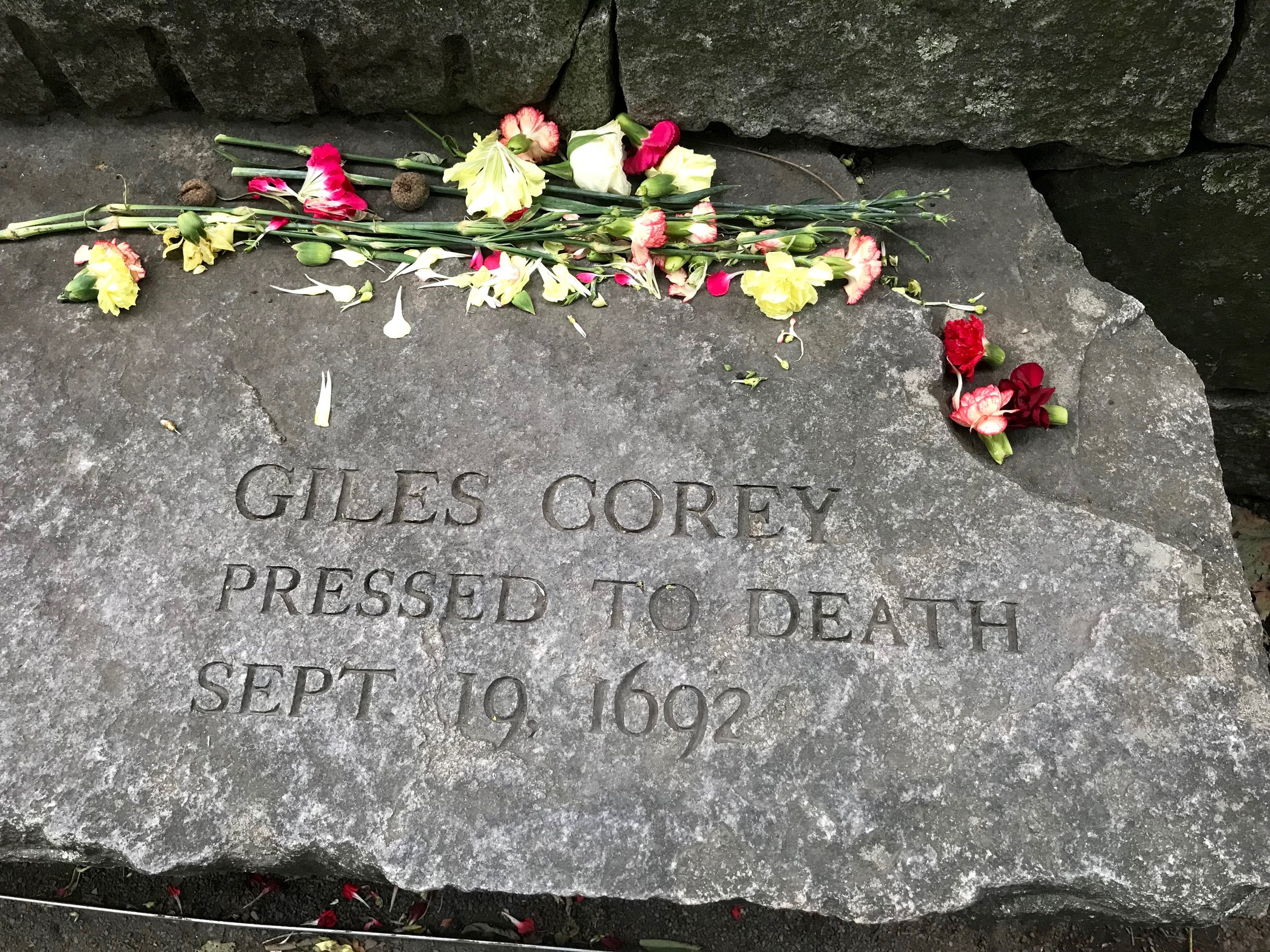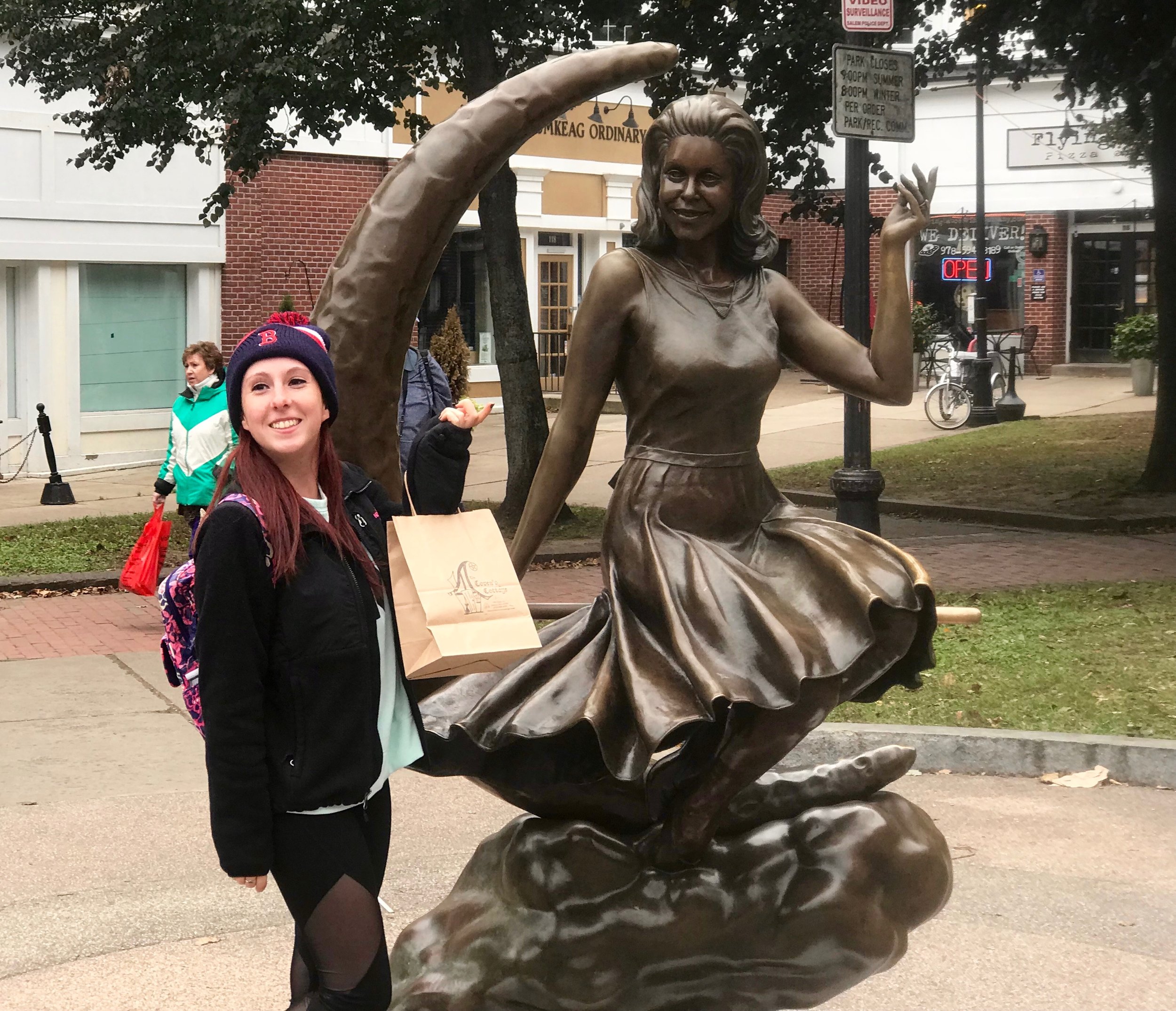The dark history of ‘Witch City’
By Rick Holmes
Oct. 20, 2017
Salem, Mass. – Halloween is always in season here, and in October things really get crazy.
A street preacher stands on a step-stool on Essex Street, condemning the signs of evil all around. A member of The Satanic Temple stands next to him, silently mocking in protest. A monster named Joe blows a sweet sax on the next corner. Barkers pitch haunted houses and ghost tours, séances and psychic readings.
It’s all in fun. The only real nightmare in Salem is finding a place to park.
Salem calls itself the “Witch City.” It takes pride in its supernatural reputation, and makes the most of it. More than a million tourists a year visit this small coastal town north of Boston, spending more than $100 million.
How strange to build a tourism franchise out of a gruesome miscarriage of justice.
There’s nothing paranormal about Salem, now or ever. Its claim to fame is a bout of mass craziness and bad law that resulted in the execution of 20 innocent women and men.
That story is here, but you’ve got to look for it. It’s horrifying, and it’s true.
In the summer of 1692, a group of young girls in Salem Village began acting strangely. They feigned trances, babbled incoherently and said they saw things that were not there. Superstitious grownups paid attention, and the girls’ stories grew into accusations of witchcraft.
They accused Tituba, a slave from Barbados who had entertained the girls with stories from her native island, Sarah Good, a homeless beggar, and Sarah Osborne, whose family was feuding with the family of one of the girls. They accused Rebecca Nurse, a frail elderly woman incapable of the acts they alleged, and little Dorothy Good, who was only four years old.
Some raised their voices to object, like John Proctor, a prominent farmer and tavern owner. So one of the girls accused him of witchcraft.
With the blessing of Puritan Church leaders – including Cotton Mather, the most influential clergyman of his time - civil authorities arrested, interrogated and jailed those who were accused. This was no lynch mob. The witchcraft prosecutions were acts of government, operating under laws and beliefs that prevailed at the time.
One law allowed the introduction of “spectral evidence” that only those “afflicted” by a witch can see. Another law allowed suspects to be “pressed” until they confessed. So Corey Giles was tied down, sandwiched between boards, as stones were piled on top and officers of the court demanded he confess. His last words, uttered before the stones broke his ribs and crushed his lungs: “More weight.”
Then the fever broke.
The governor shut down the witchcraft court, and most of those still held were declared not guilty or pardoned. In the years to come, some of the accusers and court officers apologized for their part in the prosecutions.
The story of the Salem witch trials became a cautionary tale as the American colonies grew into the United States. It told of the importance of due process to protect the innocent in criminal proceedings. It told of the danger of intertwining church and government. It showed what happens when fear and mass hysteria rule.
Only recently did Salem get a monument that told its tragic story. In 1992, on the 300th anniversary of the witch trials, a memorial garden was dedicated next to an old graveyard steps from the downtown tourist attractions. Out of its rough stone walls protrude 20 shelves, each engraved with the name of someone killed by Salem’s madness. The flowers left each day on the shelves are testament that their stories are still being heard.
A couple of blocks away, tourists line up to have their pictures taken with Salem’s newest attraction, a 9-foot statue of Samatha, the witch in “Bewitched” riding her broom.
How we got from a 17th century witch hunt to a 1960s sitcom has more to do with Hollywood than history. Hollywood turned witches into stars, consigning Salem’s hysterical girls, theocratic judges and innocent victims to the background. The Wicked Witch of the West peers from every corner. A National Park Service ranger says every day a tourist asks how to find the house featured in “Hocus Pocus.”
I’m old enough to remember when only children considered Halloween a big deal. Now it’s a $9.1 billion industry, and the National Retail Federation says the most popular costume for adults this year is the witch. Before we hop on our brooms and fly off to an evening of Halloween fun, let’s remember the real people whose deaths gave Witch City its fame.
Rick Holmes can be reached at rick@rickholmes.net. You can follow his journey at www.rickholmes.net. Like him on Facebook at Holmes & Co, on follow him on Twitter @HolmesAndCo



